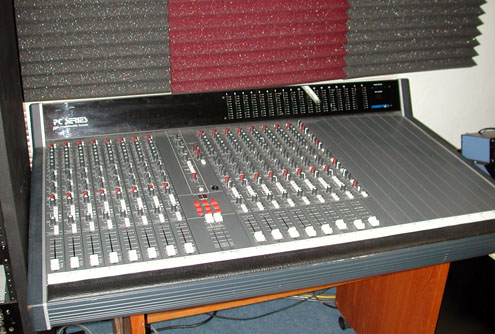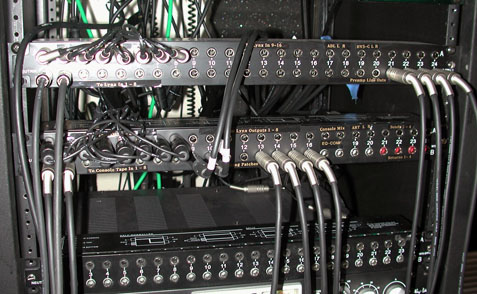Just finished a voice over recording session for a radio play. The play will be on an upcoming CD release for the heavy metal group, Butcher. The voice over was performed by two actors spaced 3 feet apart, facing each other. The large diaphram condensor mics were set to a cardioid pattern, but of course there was considerable bleed between the two.
I used a U87a on the female actor’s voice, and a Michael Joly modded MXL V67 on the male’s voice, each recorded to separate mono tracks in SONAR. The U87 was clear and powerful, full of presence, as I expected, but the sound from the V67 was thin and hollow sounding, which I noticed only when playing both tracks back together. This was not what I was expecting from the Joly modified V67.
Then it hit me! The bleed into the U87, being 3 feet away, was introducing a 3 ms partial phase cancellation for the male actors voice, when listening to the U87 track.
Its about 1 millisecond delay per foot of separation, that’s recording 101 for you. And yes it was considerably noticeable. However when I muted the U87 track and listened to the male actor voice soloed, it sound very good. Not U87 good, mind you, but much better. Considering the V67 is a $300 mic (after the Joly mods), it holds up well as a 2nd stringer to the U87.
So rather than try a different mic I just dealt with the phase cancellation in the DAW, when mixing. Its a simple matter to edit the tracks to eliminate the bleed, as long as the two voices are reading distinct parts and not talking over each other. Fortunately that is the case for this script, just a few places where you will hear both voices together.
Being out of phase is something that recording engineers really need to pay attention two, especially for vocals, when recording with multiple mics. Having better isolation also helps, but I did not have the room nor the available “gobos”. I might have used one of Ethan Winer’s Real Traps Portable Vocal Booths in this situation, but I wanted the talent to face each other as they were carrying on a “conversation”.
I will post some examples of this partial phase cancellation for anyone to hear, so you know what I mean.









Recent Comments